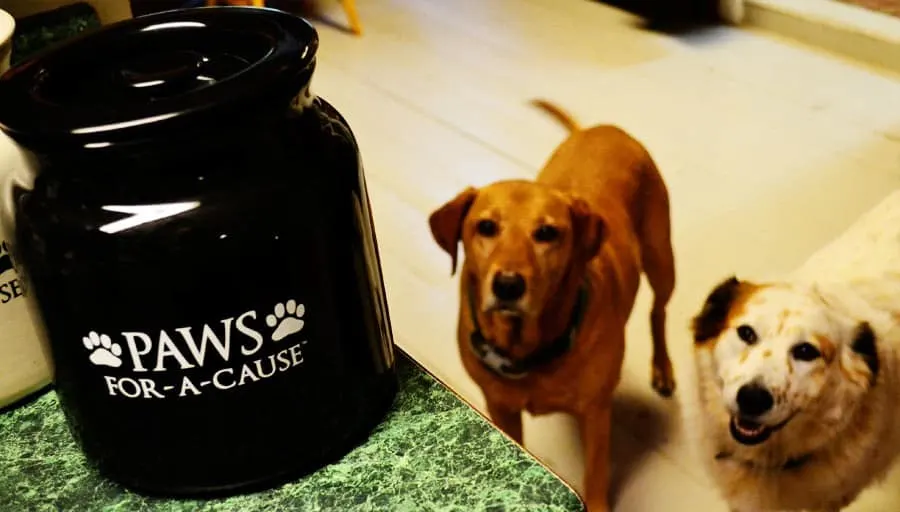Wondering how long you can store dog treats–and how long homemade dog treats last? We’ve got an easy rundown here for both commercial and homemade treats. Buying (or making) dog treats in bulk can be a great way to save money and know you always have treats on hand, but it’s critical that you store them safely.

Do Dog Treats Expire?
Commercial dog treats include preservatives to make them shelf stable–but they do have an expiration date. Look for a “best by” date on packaging.
Typically they are intended to be stored in their packaging which has been developed to extend the freshness.
If you find a favorite brand on sale, you can freeze commercial treats to extend their freshness. (See below for our freezing tips.)
How Long Do Homemade Dog Treats Last?

Because homemade treat don’t include preservatives, they have a short shelf life. Homemade meat treats have a shorter shelf life than baked goods like peanut butter treats.
To be safe, meat treats should be stored in the refrigerator 3-4 days, much like your own leftovers.
If you have more treats than three or four days worth, transfer part of them to the freezer, taking out and thawing treats as you need them.
Baked goods like peanut butter dog treats can be stored in the refrigerator about a week.
With either meat treats or baked homemade treats, you’ll want to completely cool the treats before storing to prevent moisture from shortening the shelf life (and creating a soggy treat!)
If you are baking your treats, turn off the oven, leave the door cracked and let the treats cool inside the oven to really dry them out.
The best place to store a large batch of homemade treats is in your refrigerator or freezer, although your dog might have other ideas!
When we have homemade treats, we keep them in the refrigerator and put just a day or two’s worth in the cookie jar or my dog treat pouch at a time.
Can You Freeze Homemade Dog Treats?
Freezing treats is a great way to handle the large volume you might have when making your own treats.
How long can you freeze treats?
According to the US Food and Drug Administration, freezing at 0°F keeps food safe indefinitely but the quality of the food may change after a certain period.
Food stored for long periods will remain safe, but if you’re sharing it with your dog, you may notice a change in texture or flavor after a 4- to 6-month period for most foods.
Regardless of freezer time, it’s always important to use airtight storage to avoid freezer burn. If you put the treats in a zippered plastic bag, squeeze out all additional air to prevent freezer burn. Even better, if you have a vacuum sealer, use it to pump out all the extra air in the package before freezing.
When you’re ready to use the frozen treats, letting the treats come to room temperature before serving them will make the treats stronger smelling, especially important for training treats!
More Posts You Might Enjoy
Dog Food Storage: What You Need to Know
- Review: Jimmy BX7 Pro Anti-Mite Vacuum Cleaner - December 16, 2024
- 🎉 GIVEAWAY: Lord of the Pets Portrait of Your Dog! - November 26, 2024
- Review: Lord of the Pets Portraits - November 17, 2024
